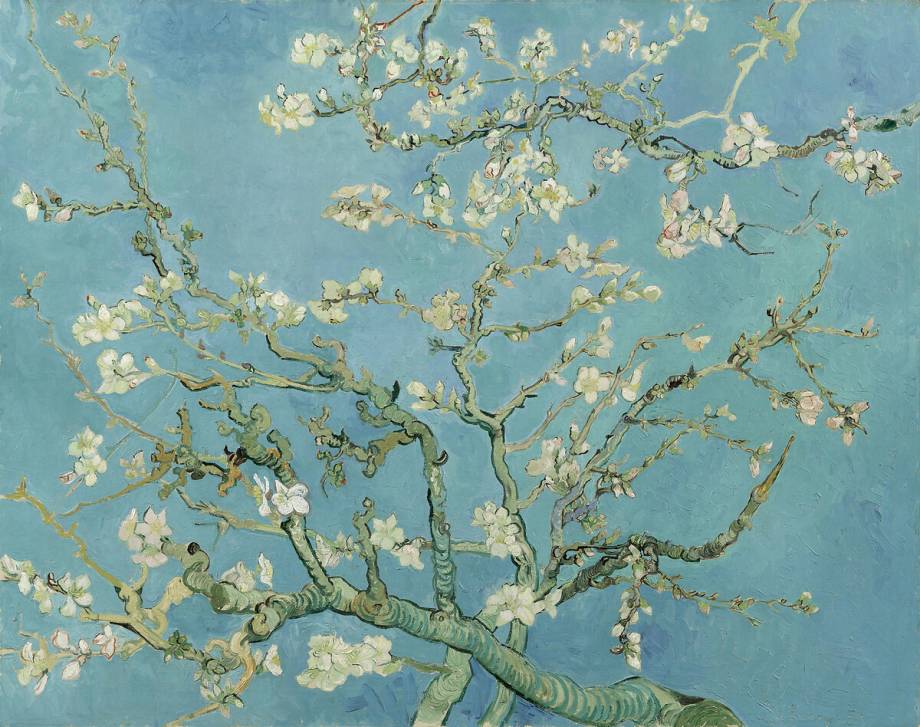Shop art print and framed art Almond Blossom by Vincent van Gogh
Customise
Your art print
Almond Blossom OF Vincent van Gogh
-20%Almond Blossom
Vincent van Gogh's Almond Tree in Bloom: an ode to spring
The Almond Tree in Bloom is one of Vincent van Gogh's most famous works, painted at the end of his life. This canvas features an almond tree in blossom, a symbol of renewal and ephemeral beauty. In this article, we invite you to explore this exceptional work of art and understand its importance in Van Gogh's artistic career.
Historical and artistic context
Van Gogh painted The Almond Tree in Bloom in 1890, shortly before his death, while staying in the South of France. This period was marked by great productivity on the part of the artist and a considerable evolution in his style. Indeed, he gradually moved away from realism towards impressionism and symbolism.
Japanese influence
The Almond Tree in Bloom also bears witness to the influence of Japanese prints on Van Gogh's work. The painter was fascinated by Japanese culture and collected ukiyo-e prints. Some of the distinctive features of these prints, such as the asymmetrical composition, floral motifs and bright colours, can be seen in The Almond Tree in Bloom.
A gift for his brother
Van Gogh produced this painting in honour of the birth of his nephew Vincent Willem, son of his brother Theo. He saw it as a symbol of love and hope for this new life that was beginning. L'Amandier en fleurs is therefore a work imbued with great sensitivity and deep affection.
Description and analysis of the work
Almond Tree in Bloom depicts an almond tree with branches laden with white blossoms, against a contrasting turquoise blue background. The bright, saturated colours and simplified, stylised forms are typical of the development of Van Gogh's style during this period.
A rich and dynamic composition
The composition of The Almond Tree in Bloom is marked by a great density of floral motifs. The branches of the tree spread out in all directions, offering a teeming, lively spectacle. This profusion of flowers evokes the abundance and generosity of nature in spring.
A sense of ephemerality
Almond blossoms have a very short lifespan, giving the work an ephemeral and fragile character. This idea of ephemerality ties in with the theme of life and death, dear to Van Gogh. In the Almond Tree in Bloom, this ephemeral aspect contrasts with the permanence of the tree itself, firmly anchored in the ground.
The language of colour and form
Van Gogh here uses a play of bright, contrasting colours to create a luminous, joyful atmosphere. The blue hues of the background evoke the Mediterranean sky and sea, while the touches of white add lightness and freshness.
An expressive use of colour
The bold use of colour is one of Van Gogh's trademarks. In The Almond Tree in Bloom, for example, he chose to use a very pure, intense blue for the background, which highlights the immaculate whiteness of the flowers. The combination of these two colours helps to create a striking and memorable visual effect.
Simplified, stylised shapes
The shapes of the branches and flowers are simplified and uncluttered, reflecting the influence of Japanese prints on Van Gogh's work. This stylisation serves to emphasise the intrinsic beauty of the floral motifs and reinforce their symbolic character.
Posterity of the work
Since its creation, The Almond Tree in Bloom has become an icon of modern art and has inspired many artists. The painting is now considered one of Vincent van Gogh's major works and is part of the permanent collections of the Van Gogh Museum in Amsterdam.
A source of inspiration for contemporary artists
The Almond Tree in bloom continues to influence and fascinate contemporary artists, who seize on it to create works at the crossroads of genres and techniques. The iconic floral motifs of this canvas are thus present in many of today's creations, whether paintings, sculptures or even design.
This artwork is a painting from the modern period. It belongs to the post-impressionism styles and symbolism styles.
Find the full description of Almond Blossom by Vincent van Gogh on Wikipedia.



































